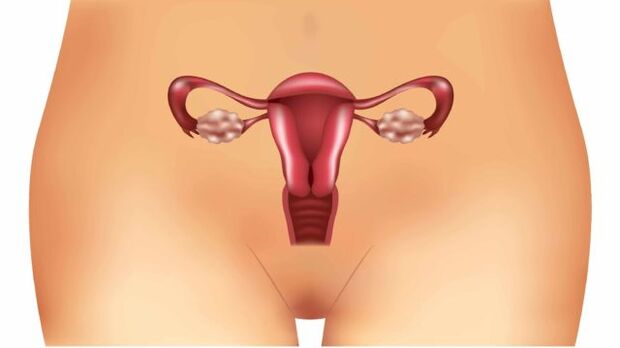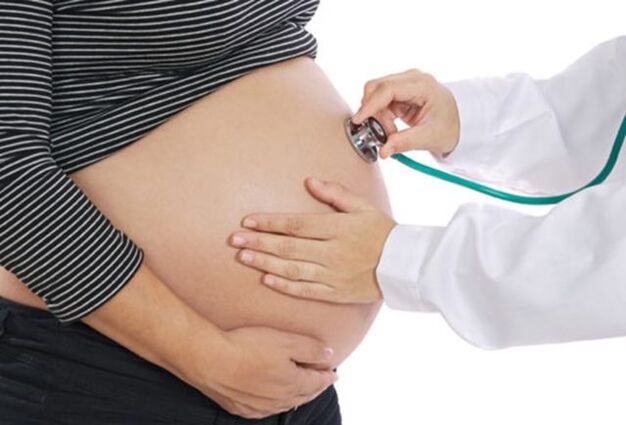Almost everyone has heard of varicose veins. In most people, this vascular disease is associated with foot problems, but quite often the pelvic organs become a place of localization of the pathological process. One of the types of this pathology is varicose veins of the uterus.
The disease is diagnosed mainly in women or girls who have entered reproductive age, but in some cases it also develops in adolescent girls. To deal with the pathology, it is important to know the main causes and symptoms of its occurrence, as well as to have an idea of the methods of treatment.
Characteristics of the pathology
Varicose veins of the uterus, what is it? This medical term refers to a disease caused by a number of pathological factors affecting the venous network of the pelvic organs:
- Thinning of the vessel walls.
- Formation of vascular nodes.
- Dilation of the venous lumen.
These three factors negatively affect the process of blood circulation in a particular part of the body and lead to valve insufficiency of the veins in the same area. The disease is difficult to diagnose due to the lack of obvious clinical signs, as well as due to the similarity with pelvic diseases of an inflammatory nature. For these reasons, the pathology is often found in severe stages, when its treatment is much more complicated.
Gynecologists distinguish two subtypes of the pathological process:
- Varicose veins of the uterus.
- Varicose veins of the cervix.
In any case, the disease is dangerous for its complications, among which there are inflammatory processes that affect the uterus, ovaries and vagina. The most serious complication is infertility.

Causes of the disease
Understanding the main factors in the development of the disease provides several key benefits. First, it allows the doctor to diagnose faster and with greater accuracy, as well as to prescribe adequate treatment. Secondly, a woman will be able to try to prevent the development of pathology.
Consider the most likely causes of varicose veins of the uterus:
- Pregnancy is considered a major factor in the development of the pathological process. Already in the embryonic stage, and then, when the fetus grows and develops, the uterine circulation increases (much depends on the period). At the same time, in vessels with a weakened venous wall, the function of the valve is impaired and they stretch. In addition, the growing fetus increases the load on the pelvic organs, which can also give impetus to the development of the disease.
- Taking hormonal drugs for a long time. Specific drugs adversely affect the condition of blood vessels, their walls lose their elasticity.
- Another factor that provokes the disease is reduced motor activity. Sedentary or sedentary lifestyle leads to a decrease in contractile function of the muscles, the consequence will be a violation of blood circulation.
- Increased physical activity in the pelvic area. In this case, as in pregnancy, blood flow to the pelvic organs, especially the uterus, increases.
- Increased constipation - in this case the cause of varicose veins again is an increase in blood flow. Now, however, blood circulation is increasing due to increased intra-abdominal pressure.
- Congenital anomalies in the structure of the uterus.
- Artificial termination of pregnancy.
- Difficult birth.
- Inflammatory processes in the pelvic organs.
Symptoms and diagnosis
The difficulty in diagnosing varicose veins of the uterus lies in the fact that the symptoms of this disease are masked as other pathologies. In addition, the clinical picture showing the development of the disease is quite poor:
- Frequent, recurring more than 3-4 times a week pain in the lower abdomen, closer to the pubic area. The pain syndrome is very pronounced, the nature of the pain is pulling and painful. In some cases, the pain is so severe that the woman loses her ability to work, it is even difficult to get out of bed.
- More than 80% of women with varicose veins experience discomfort or even pain during or after intercourse.
- There may be a violation of the menstrual cycle, delayed menstruation for up to 50-60 days. In this case, the discharge is often scarce, menstruation is prolonged for 5-7 days. Prolonged absence of menstruation is considered by many women to be the first signs of menopause.
This clinical picture is inherent in a number of other gynecological diseases. For this reason, it is impossible to diagnose solely on the basis of symptoms, the doctor is obliged to prescribe a number of diagnostic measures. In addition, the symptoms of varicose veins of the cervix are approximately the same.
Important: Varicose veins of the uterus are diagnosed mainly in the second stage, because it is at this time that the described symptoms begin to bother the woman. The earlier the pathology is detected and treated, the less likely it is to have complications, especially infertility.
As for the directly commissioned studies, they are as follows:
- Ultrasound, which is performed by transvaginal method.
- CT of the pelvic organs.
- Doppler.
- Selective ovariography.
The need for any diagnostic method depends on the data obtained as a result of ultrasound, as it is performed first.
Characteristics of the disease during pregnancy
Due to the increased load on the body as a whole and the pelvic organs, during pregnancy the chance of developing varicose veins of the uterus increases. Until the woman gives birth, the disease is not cured.

The pathology that develops during pregnancy affects the choice of method of birth. Very often the doctor decides to perform a cesarean section. This is done to avoid complications in the form of thrombophlebitis, internal bleeding, thrombosis and others.
Regardless of the period of pregnancy during which the disease is detected, the woman should be constantly monitored by a doctor to monitor the condition of the fetus and the progression of varicose veins.
Important: When planning a pregnancy, have an examination to identify varicose veins of the uterus and other gynecological problems. This will help avoid complications during childbirth and reduce the risk of pathologies of fetal development.
Treatment of the disease
To get qualified help for varicose veins, you should contact a doctor, initially a gynecologist, who will then refer you to a phlebologist.
The basis of treatment is drug therapy, which consists of taking the following drugs:
- Venotonics - drugs from this group have a beneficial effect on the condition of blood vessels. They tone the capillaries and blood vessels, reduce their permeability, increase elasticity and strengthen the walls of the veins.
- Drugs to reduce blood viscosity - contribute to the overall improvement of blood flow and outflow in the affected vessels, reduce the likelihood of thrombosis. Drugs from this group are contraindicated in pathologies of the cardiac system.
Important: Each drug is prescribed only by a physician based on a preliminary diagnosis, medical history of the patient and taking into account the stage of development of the disease. It is important to take special care of women in position.
Methods of treatment
In addition to drug therapy for holistic treatment, an integrated approach and application of the following recommendations is important:
- adherence to sleep patterns;
- minimizing physical activity but at the same time maintaining mobility;
- adherence to a diet that includes plenty of vegetables, fruits and oils rich in vitamin E;
- supportive sports, therapeutic gymnastics;
- complete elimination of any bad habits;
- some doctors recommend Kegel exercises to help strengthen the vaginal muscles.
Surgical intervention
Such drastic measures are necessary in cases where conservative treatment has not led to the desired results or the disease is detected at a late stage. The most popular are the following methods of surgical intervention:
- Phlebectomy is the removal of individual areas of small vessels.
- Laser coagulation is the most gentle type of restoration of normal blood flow.
- Sclerotherapy is the introduction into the vein cavity of an agent that promotes its adhesion. The lack of blood supply in the vessel will lead to its spontaneous elimination.
- In the most severe cases, it is necessary to perform a complete removal of the uterus, sometimes together with the appendages.
ethnoscience
Alternative methods are one of the options for complex treatment in a conservative way. They are not able to completely replace drug therapy, but may affect the success of therapy as a whole.
The most effective means of traditional medicine are:
- Horse chestnut infusion: take 100 grams of chestnuts, chop them together with the peel. Pour the resulting raw material with enough vodka to cover the crushed fruit by 4-5 millimeters. Insist in a dark place for 14-15 days. Then the infusion is taken 10 drops twice a day. The tool strengthens blood vessel walls and thins the blood.
- Lilac tincture: for 0, 5 liters of vodka you need to take 100 grams of lilac flowers and 30 grams of propolis. All ingredients are poured with vodka and left in a dark place for 30 days (every 2-3 days should be shaken). The tincture is then filtered and consumed 15 milliliters three times daily before meals.
Remember that before using even the most innocuous traditional medicine, you should consult a doctor.
Complications of the disease
Varicose veins of the uterus are dangerous for their complications in the absence of adequate treatment. These complications are as follows:
- internal bleeding;
- thrombosis;
- inflammatory processes of the genital organs;
- menstrual disorders;
- hormonal dysfunction of the ovaries;
- infertility.
Precautions
It is always better to prevent the disease by preventing its development than to deal with it later or the consequences. To prevent varicose veins in the uterus, follow these simple guidelines:
- lead a mobile lifestyle, walk more and walk;
- do gymnastic sports;
- eat healthy food, less fatty, fried, spicy, spicy, sour;
- visit the gynecologist regularly, especially at the slightest complaint.

Despite the difficulty in detecting varicose veins of the uterine veins, to avoid the progression of the disease and complications, if the previously described symptoms occur, consult a doctor. It is also important to remember that self-medication in such cases is contraindicated, requires careful diagnosis and constant monitoring by a gynecologist and phlebologist.












































